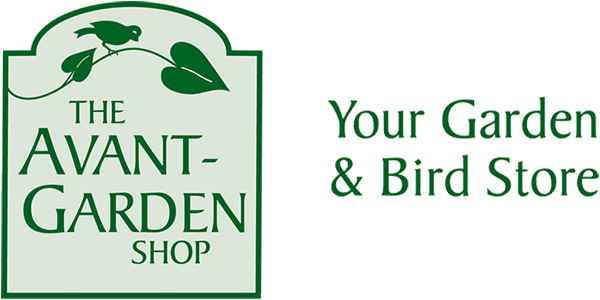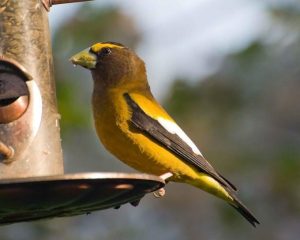“Stock your bird feeders because many birds will have a difficult time finding natural foods this winter…”
Fall migration is now well underway, and you may be noticing more birds and new species at your feeders. Many seed eaters, such as Dark-eyed Juncos and American Tree Sparrows move in for the winter as most insect-eating songbirds make their ways south to find food.
Birds need to conserve energy as the days get shorter and the nights cooler. You can help by using hulled seed, which makes it quicker and easier for the birds to access their food. This is also a good time to add higher-fat foods, such as peanuts and suet to your feeding systems.
This winter, we can expect several bird species to pass through or overwinter here that normally only come this far south every few years. In a phenomenon known as an “irruption,” many species that usually stay farther north for the winter move southwards. Several circumstances can contribute to irruptions. One is a “bumper crop” of birds, caused by favourable weather and food conditions over the previous winter, spring, and summer that resulted in lots of birds surviving the winter, who in turn produced lots of young that survived the summer (perhaps also because of a lower predator population that year). In this case, the “surplus” birds need to move farther south to find enough food for the winter. Another circumstance, which is the case this year, occurs when the natural food supply is low (seeds for finches or mice/voles – especially when coupled with deep snow – for owls), and birds need to move father south to find adequate food.
Although the circumstances behind an irruption may be challenging for the birds themselves, they are a treat for birdwatchers. This year, the cone and birch seed crop in the north is small, and species such Pine and Evening Grosbeaks, Common and Hoary Redpolls, Red and White-winged Crossbills, and Pine Siskins will join the usual winter feeder gang in this area. You can learn more about this winter’s irruption forecast on Ontario naturalist, Jean Iron’s, website.
It’s especially important during an irruption year to be diligent with maintaining your feeder. The Avant-Garden Shop carries high-quality finch feeders and seed to help. Our Droll Yankees and Aspects are guaranteed for life. They don’t yellow or crack, squirrels can’t chew them, and their tubes are replaced free of charge if they do end up chewed or cracked. Aspects are easy to fill from the bottom, which makes it faster to cycle through older seed; however, you can keep older seed closer to the bottom of the Droll Yankees by pouring the seed from one into a second one when refilling, and alternating between the two in this way.
Any finch feeder will be busy when filled with Millcreek Seed’s exclusive NyChip blend, which contains fresh high-quality nyger and chipped, hulled sunflower seeds. Brenda is filling her feeder with this blend every day and has over 20 finches almost constantly at her feeder.
Check out these Garden Gate episodes on CHEX TV to learn more (~3 minutes):
- Episode 149: Irruption
- Episode 141: Goldfinches
- Episode 99: Getting birds ready for colder weather
- Episode 129: Attracting birds with peanuts and suet

